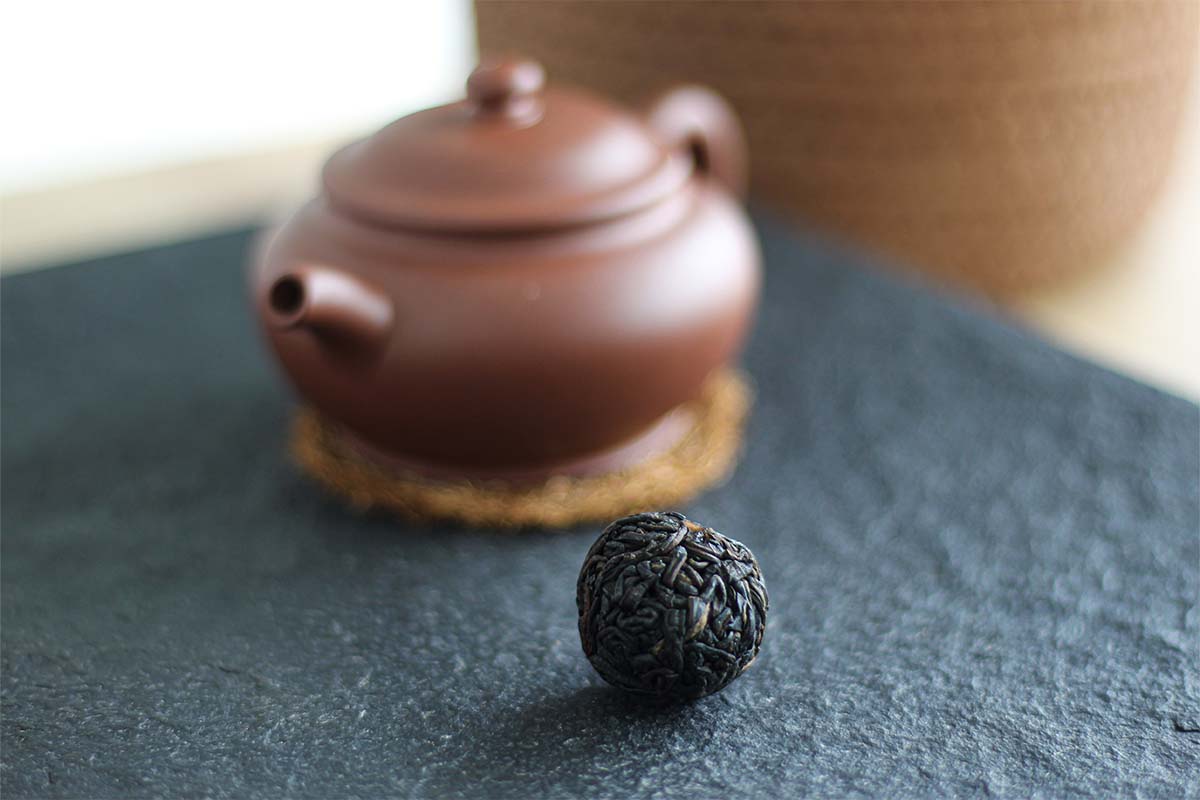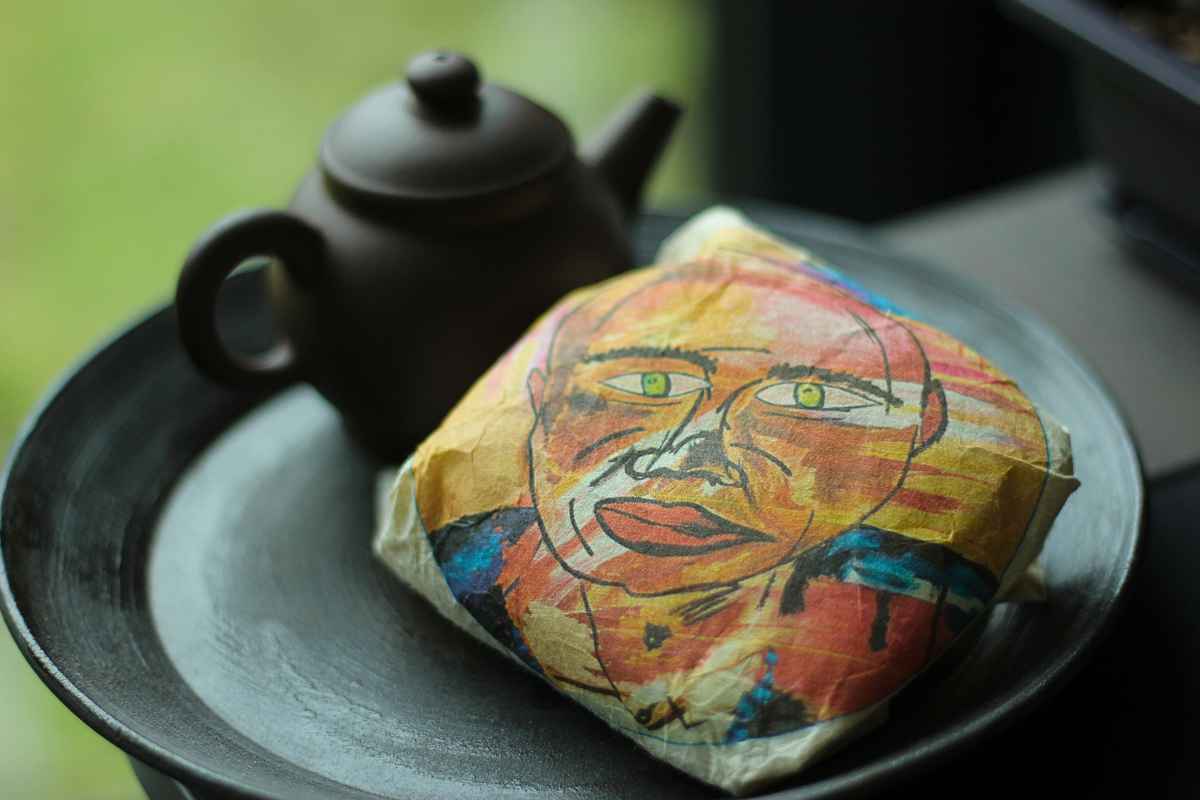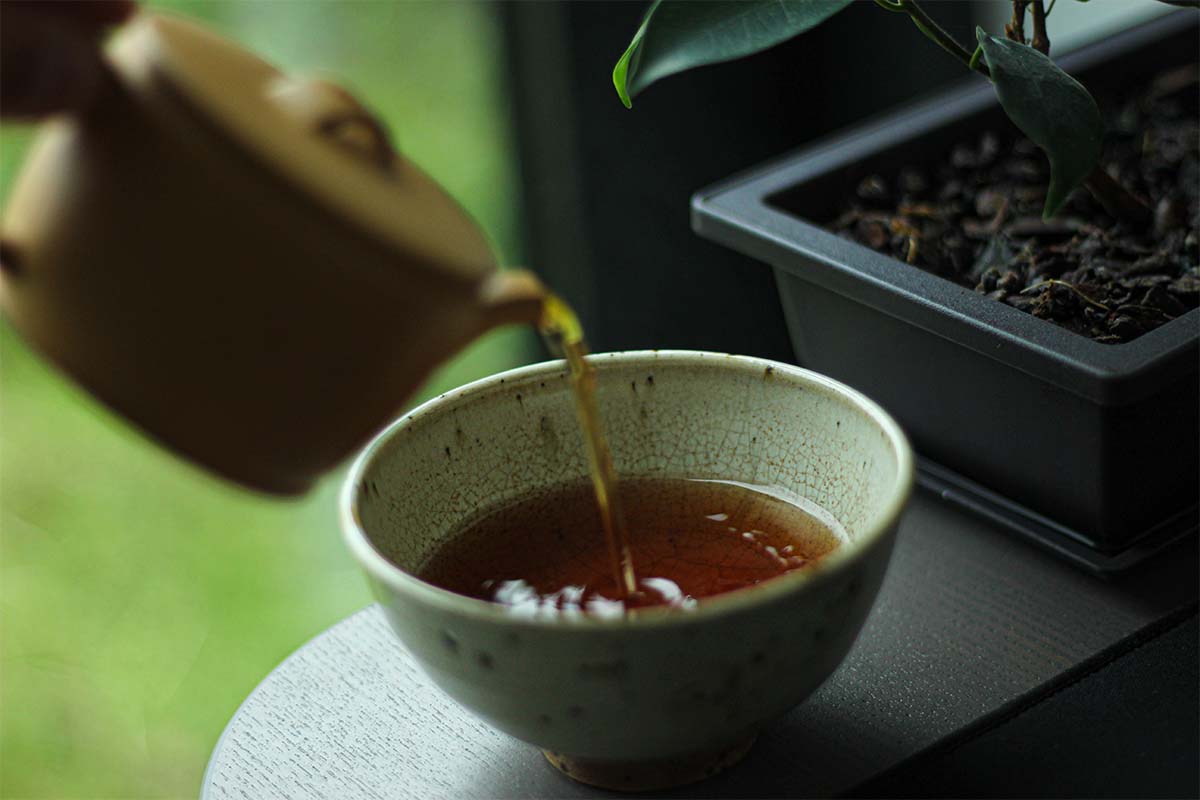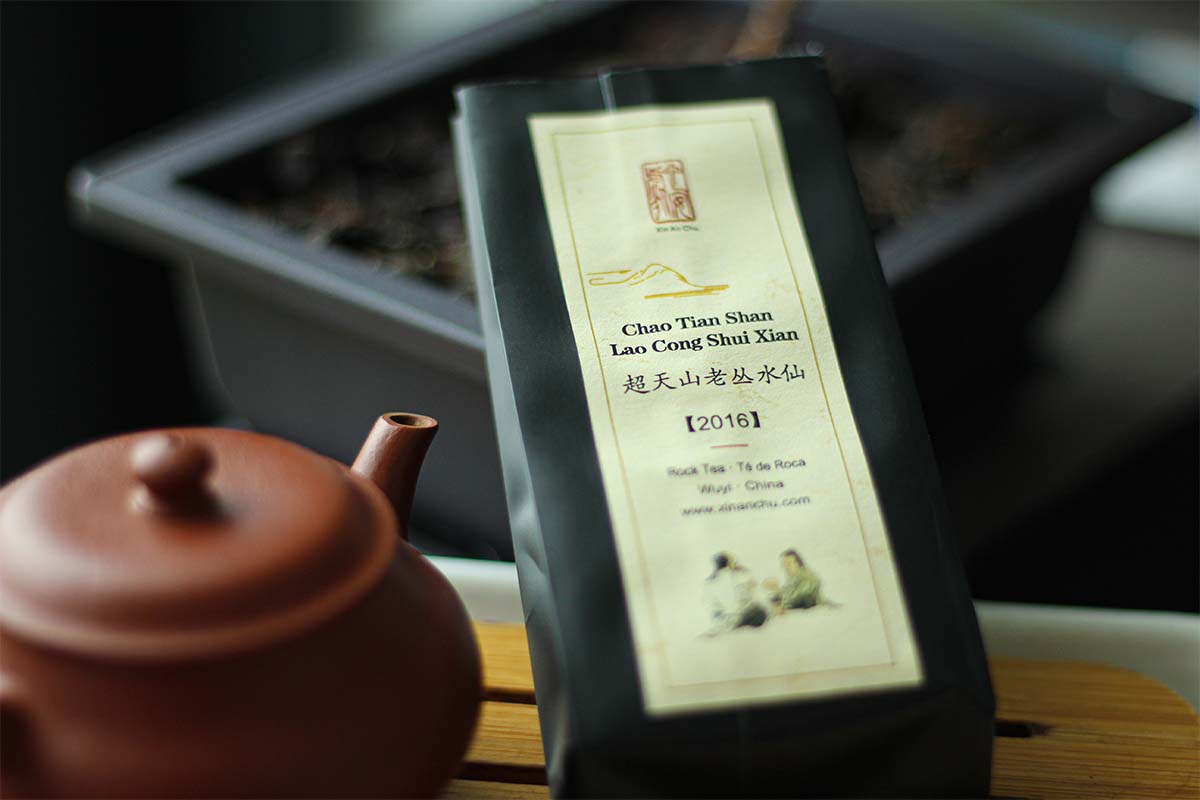Aged and semi-aged sheng puerh is something I really like and it has been a while since my last tea session. Liu from Xin An Chu sent me a 2006 Jinggu Purple Dragon Ball so that is something I want to try because it’s aged and it’s purple tea!
2006 Jinggu Purple Dragon Ball
A dragon ball is a small ball of tea (usually around 5-8g) that you just throw in your pot and it’s perfect for a session. It usually takes a while for the leaves to fully open, but it’ll happen eventually.

The 2006 Jinggu Purple Dragon Ball was produced in 2006 and it was made using a rare purple varietal of the big leaf variety in Yunnan. If you look closely, the leaves have a purple hue to them. Only a small amount of all tea trees is this purple varietal, so purple tea is quite rare.

Don’t know where to buy tea online? I made a list of over 300 online tea shops and I keep updating it regularly. You can check it over here
It’s important to keep in mind that purple tea is not a separate kind of tea like green tea or white tea. In order to produce sheng puerh, they use the big leaf varietal (Da Ye Zhong) from Yunnan province. This dragon ball is produced like sheng puerh, but the material that was used came from a mutated Da Ye Zhong varietal that has a slightly purple color.
Tea Tasting
- Water 99°C
- 1 dragon ball for a 100ml teapot
The packaging is adorable as the dragon ball is packed in a small piece of paper. When I open the bag, I smell some aged wood notes and a tiny bit of fruit. The leaves have a dark color (as it’s from 2006) and even though it’s a dragon ball, they seem rather big.
I’m doing two fairly long rinses to make sure the leaves are fully open. After the double rinse, I’m getting hints of incense and fruity tobacco in the aroma. I can definitely smell the 16 years it has been aged (in a good way). It has a more mature fruitiness as well.

Infusion 1 (15sec): the liquor is clear and seems quite thick. Flavors are subtle as it’s only the first infusion. Nothing much is going on flavor-wise. However, the aftertaste has some fruit to it.
Infusion 2 (20sec): I see the leaves have opened up so this one will be good. Really interesting tea right from the start. I’m getting a touch of smoke and incense, which is quickly replaced by a mature fruitiness. I feel the age of this one as its flavors are much more mature. The aftertaste is sweet and fruity. It’s almost as if I have just eaten a ripe peach.
Infusion 3 (25sec): the incense is more intense, but it disappears quicker than in the previous infusion. I’m also starting to sweat now. Between different sips, I’m feeling the full power of the aftertaste. It’s sweet with strong notes of ripe summer fruits.
Infusion 4 (30sec): the incense has disappeared and there is fruit right from the start. Juicy peaches and strawberries carry you through this gentle infusion. The finish and aftertaste offer even more fruitiness.
Infusion 5 (35sec): I boiled fresh water and I feel the incense is back at the start of the infusion. Just like the first infusions, it goes away as quickly as it appeared. More of the aged notes are present in the middle of the infusion and the finish is all about ripe summer fruits again.
Infusion 6 (45sec): the longer the infusions get, the more I’m getting a punch of incense at the start. It disappears really quickly, but it’s there right at the start. Still, the infusion is dominated by fruity notes.
Infusion 7 (long): I brewed this one for 2-3 minutes and the color is really dark. My theory from earlier is confirmed now; the longer I brew this tea, the more incense I’m getting. If you want to bathe in summer fruits, it’s better to do short infusions. Once the incense is gone, it slowly moves back to the fruity side of the spectrum.
Conclusion
This was an interesting tea session because the way I brewed it affected the tea a lot. Changing brewing length had a really big impact on the liquor in my cup.
This session was mostly dominated by sweet and ripe summer fruits like peaches and strawberries, but there was also some incense at the start of most infusions. The longer I brewed the leaves, the more incense I experienced. The finish and aftertaste were sweet and fruity, even when the infusion itself wasn’t.
I haven’t drunk that many semi-aged sheng puerh that still had such a noticeable fruitiness. Usually, these notes disappear with aging, but that was not the case in this one. If you want to try this 2006 Jinggu Dragon Ball, you can buy it over here.




